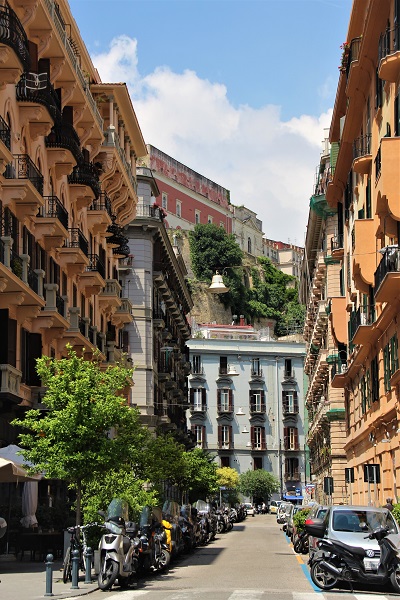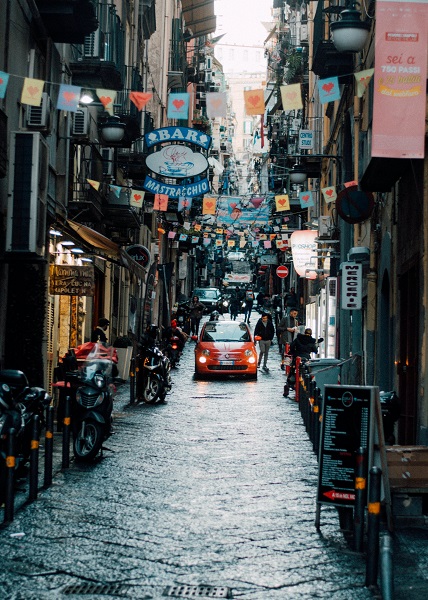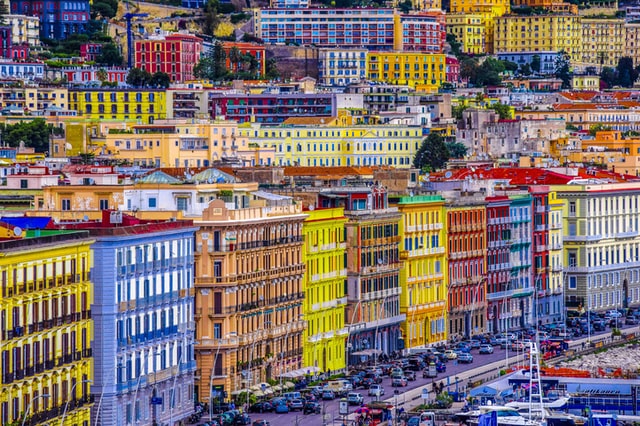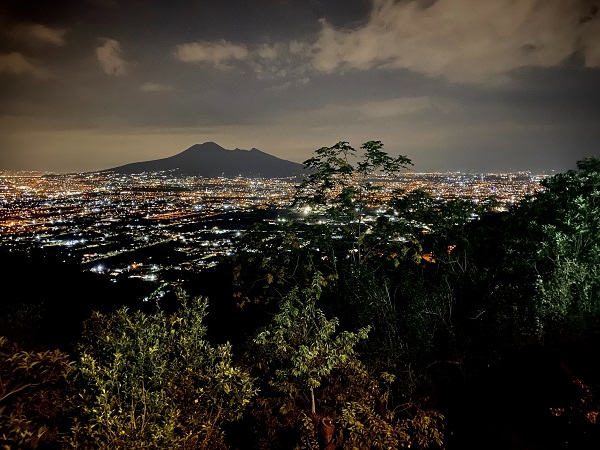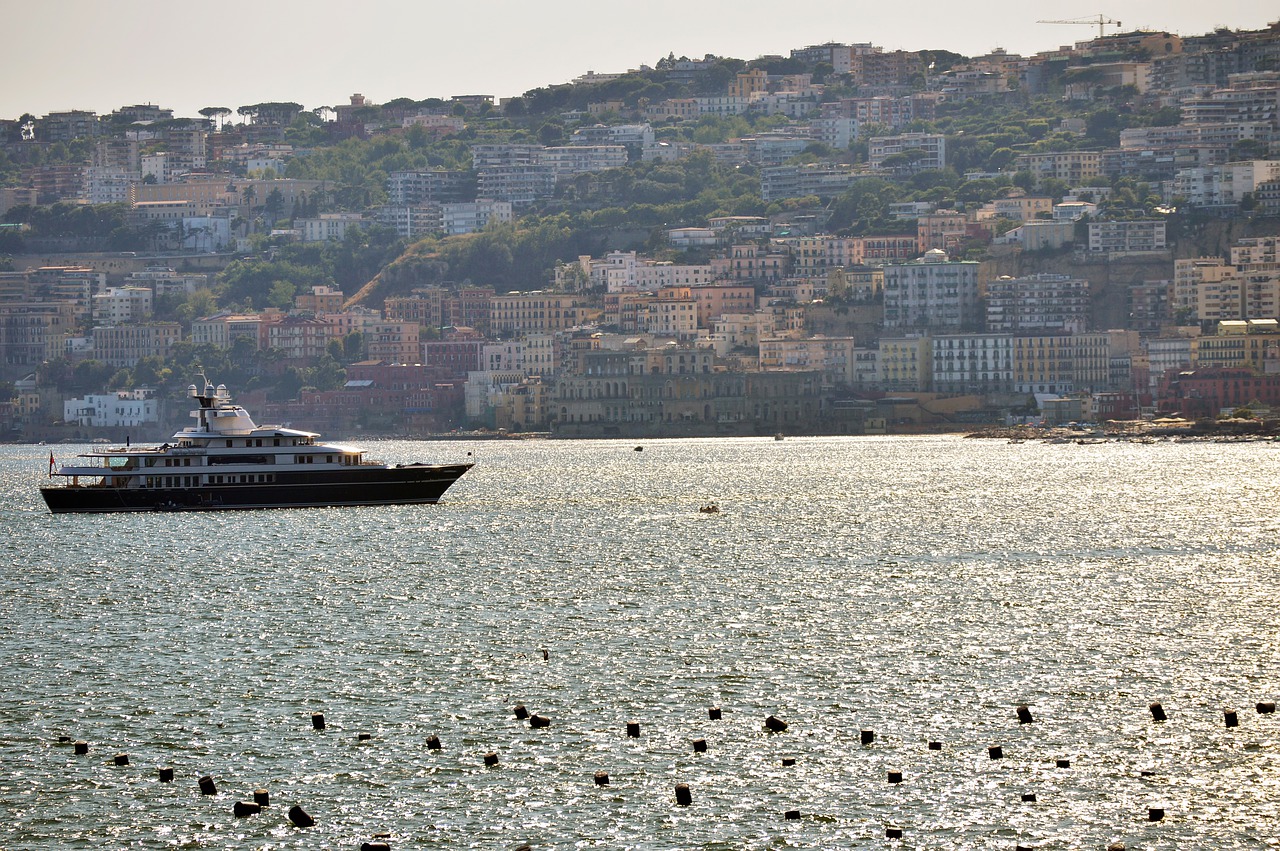Maturity
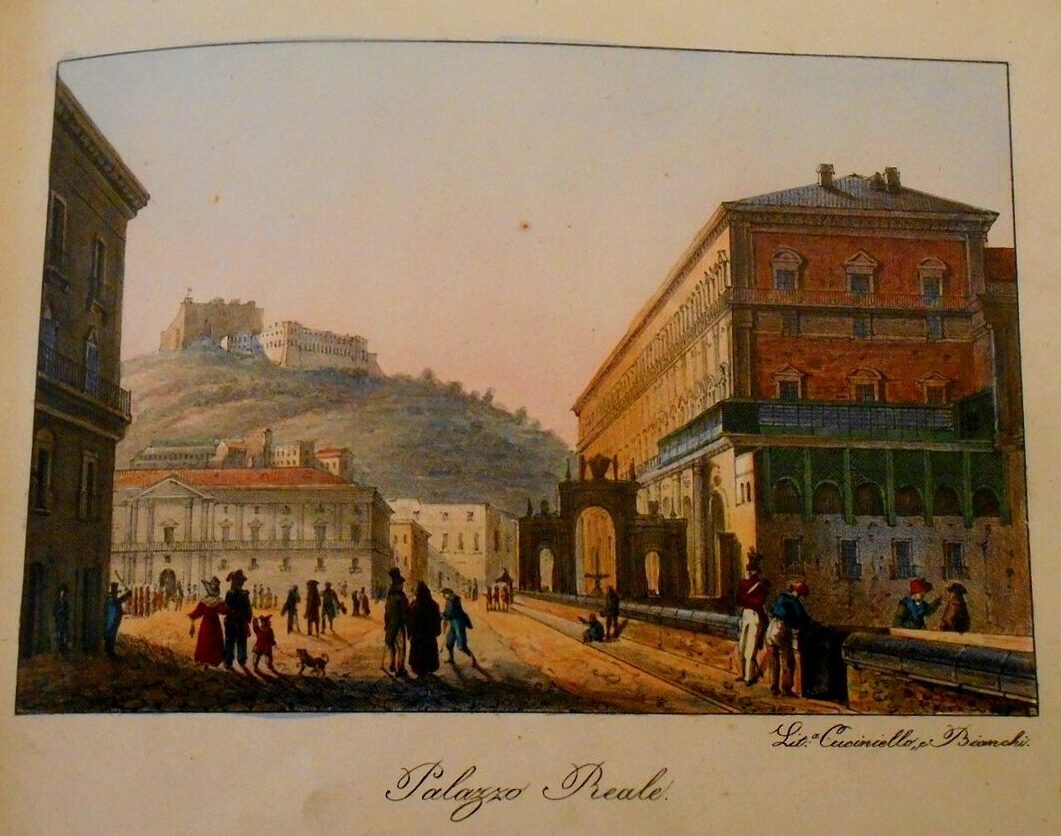
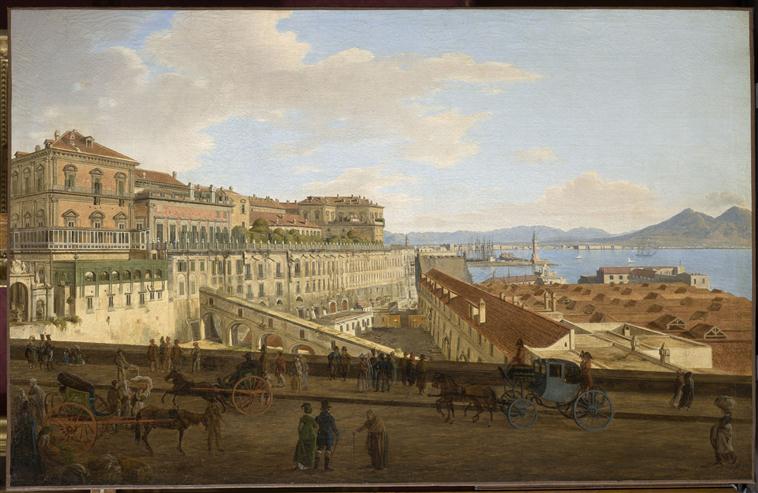
When Ferdinand I died in 1825, he was succeeded by Francesco I, who reigned for a few years, without leaving any notable marks. In 1830 Ferdinand II ascended on the throne, who instead immediately won the hearts of his people, and at least in the beginning the respect of the Italian liberals as well. Together with a major effort to reorganize the army, the new king gave impetus to progress in various sectors, allowing Naples to become a center of excellence and to achieve many firsts: in 1837 it was the first city in Italy to have gas lighting; in 1839 the Naples-Portici was inaugurated, the first Italian railway; the first steamship in Italy was added to the Neapolitan fleet, in 1841 the Vesuvian Observatory was born, the first vulcanological center in the world. Telegraph lines, new roads, bridges, health facilities, schools and professional institutes were inaugurated, and the population reached half a million inhabitants, unquestionably the largest city in Italy. The culture of the time saw the birth of the great tradition of the Neapolitan song. It was a new Golden Age similar to that under Charles III a century earlier. Much of it became possible only because Murat had laid the groundwork decades earlier by reforming the university and founding various scientific academies.

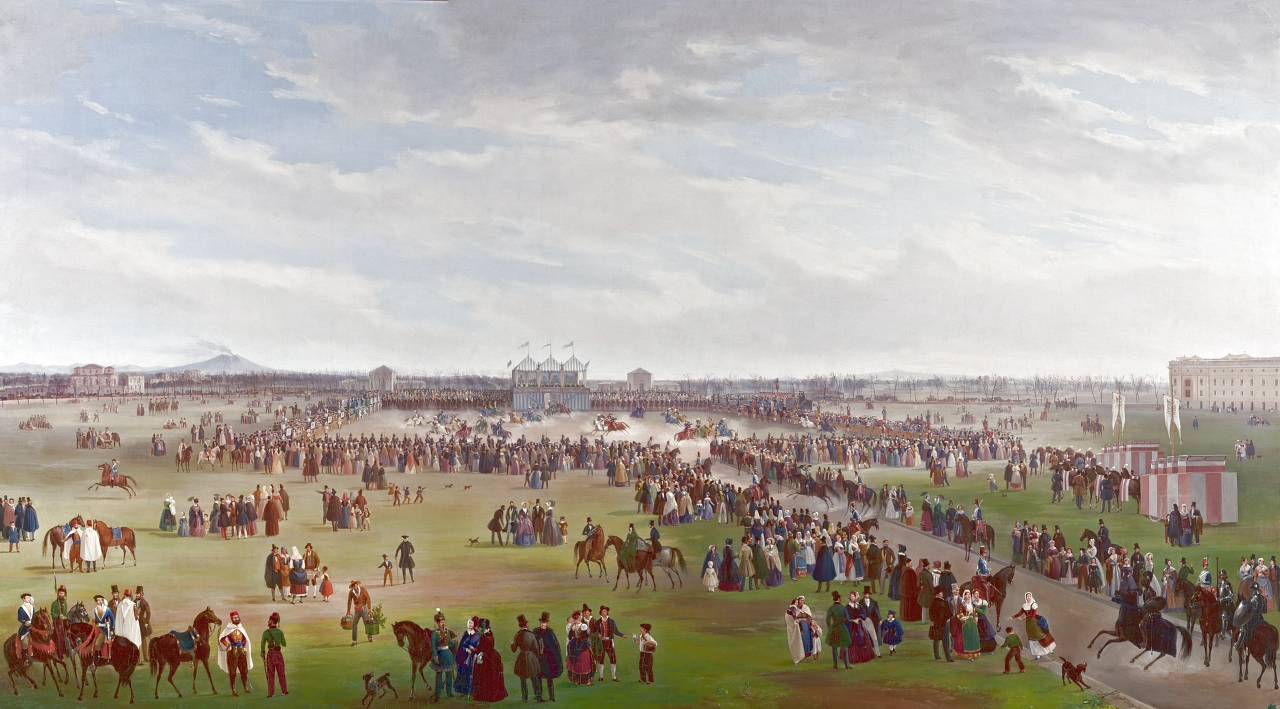
On the political level, 1848 was the year of the liberal riots. In Naples, in the wake of the reforms obtained in Tuscany and Piedmont, there were uprisings that ended with the promulgation of the Constitution and the establishment of the Parliament. The following years saw the Kingdom of Naples fighting alongside the Pope, engaged in the struggles against the liberals and forced into exile in Gaeta; the army sent by Ferdinando obtained important victories against the Roman revolutionaries, in Terracina and Palestrina. Ferdinand II died in 1859, on the threshold of the fateful year of the Unification of Italy.
The Garibaldini acquired the consent of the liberals, of the English and Piedmontese diplomacy, of the bourgeoisie and even of the Camorra. Francesco II, who had ascended on the throne in 1859, in order to avoid bloodshed inside the capital, leads his army to the north, across the and awaits the Garibaldini, whom he will face in the Battle of Caiazzo. Squeezed between Garibaldi’s army in the south and the Piedmontese one, which in the meantime penetrated from the north under the command of Vittorio Emanuele II, the Neapolitan regiments are entrenched in the fortress of Gaeta, where they resist for a long time, but without the possibility of overturning the results of the war. Thus, with the historic meeting in Palazzo Doria d’Angri , announces to the people the annexation to the nascent Italian state, under the Savoy crown.
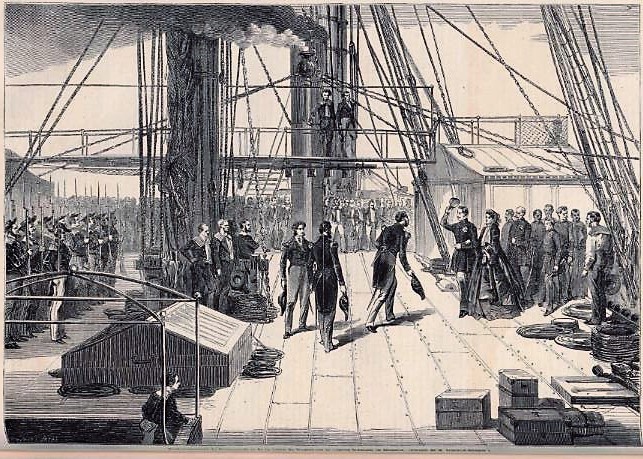
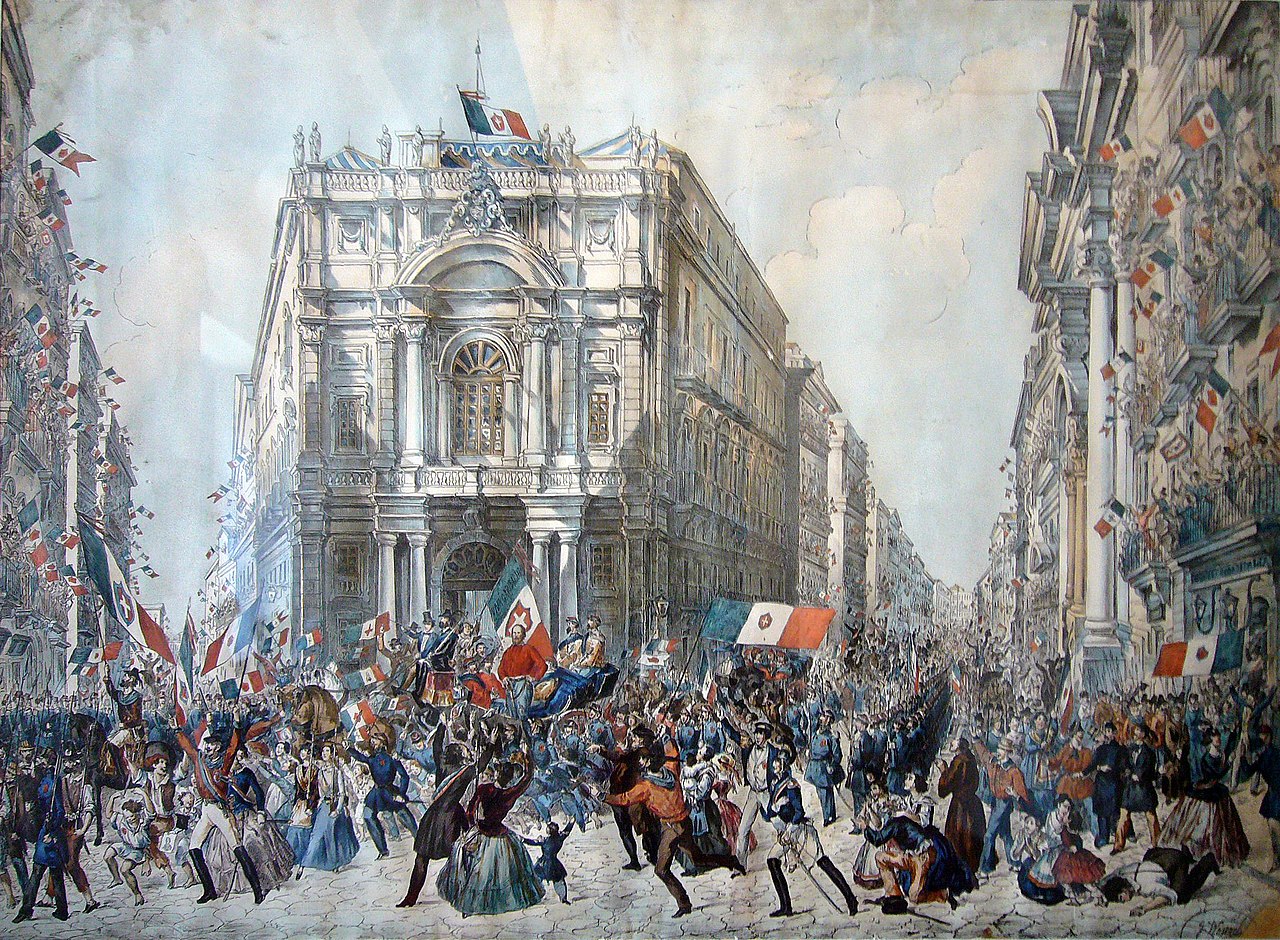
The following years are years of change for the population, grappling with a new political reality and a distant and indifferent government; in the countryside the phenomenon known as brigantaggio (banditry) spreads, and its repression is harsh, with a big army of men (about half of the entire Italian national army) dispatched to suppress it. The traffic of the port decreased significantly and its activities reduced, although various piers were built starting from the 1880’s. The outbreak of a major cholera epidemic in 1883 would claim the lives of more than 8,000 people and would lead to major interventions for the health and hygiene problems of the Napolitani with numerous buildings demolished and entire medieval areas razed to the ground aimed to eliminate the causes of the epidemic spread. A large part of the degraded central districts which were located at a level below that of the sea surface, did not allow an easy drainage of sewage so they were demolished. Roads that connected Piazza Municipio to the Central Station were created by raising the ground a few meters. The present-day via Guglielmo Sanfelice, via Depretis, Piazza Bovio, Corso Umberto, Corso Garibaldi were built which from the station reached the Albergo dei Poveri in piazza Carlo III. There were also interventions on Piazza Municipio, with the demolition of the old buildings that surrounded the square. On the sides of these streets, new and modern buildings were erected to replace the run-down pre-existing houses for the bourgeoisie of the city.
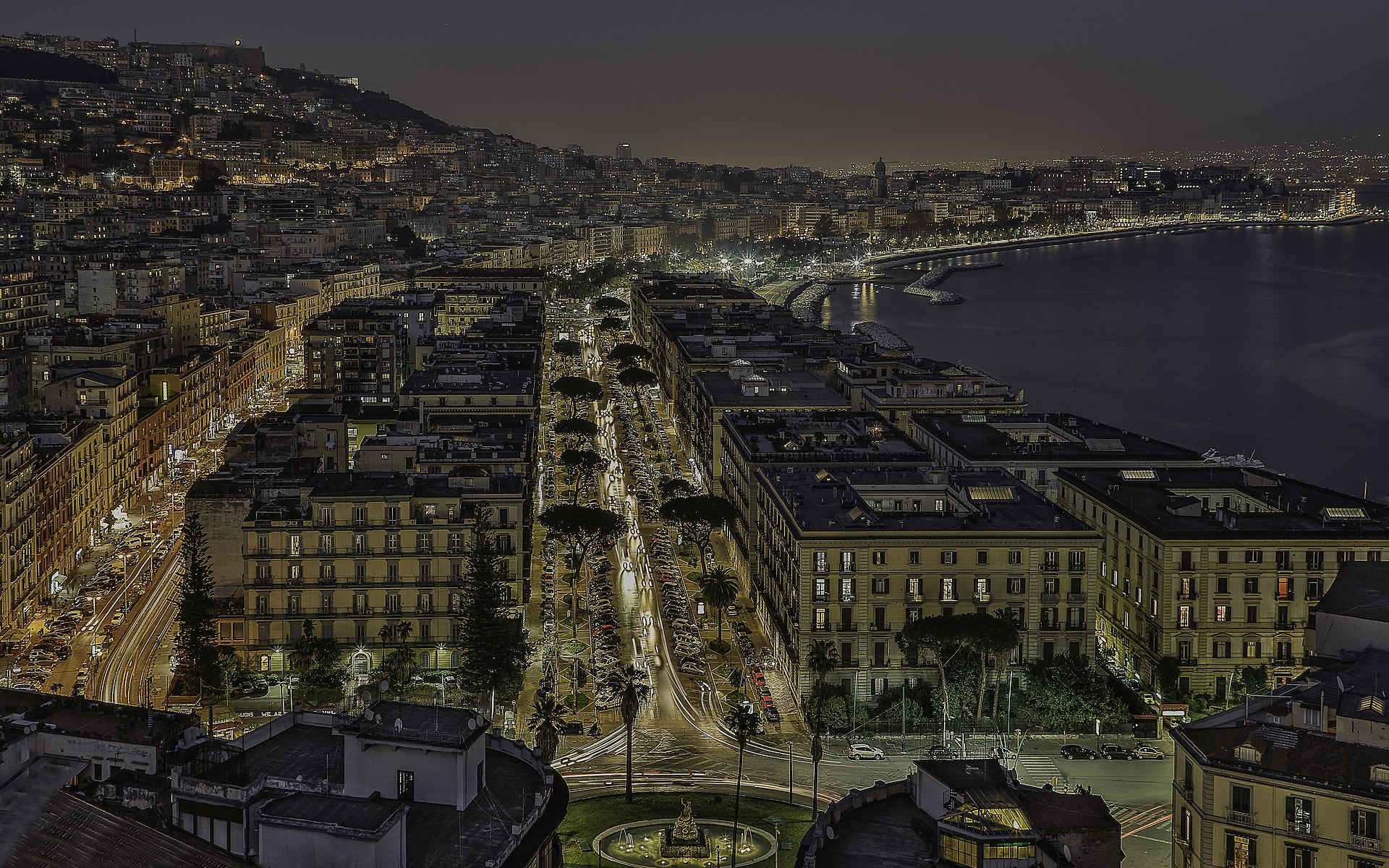
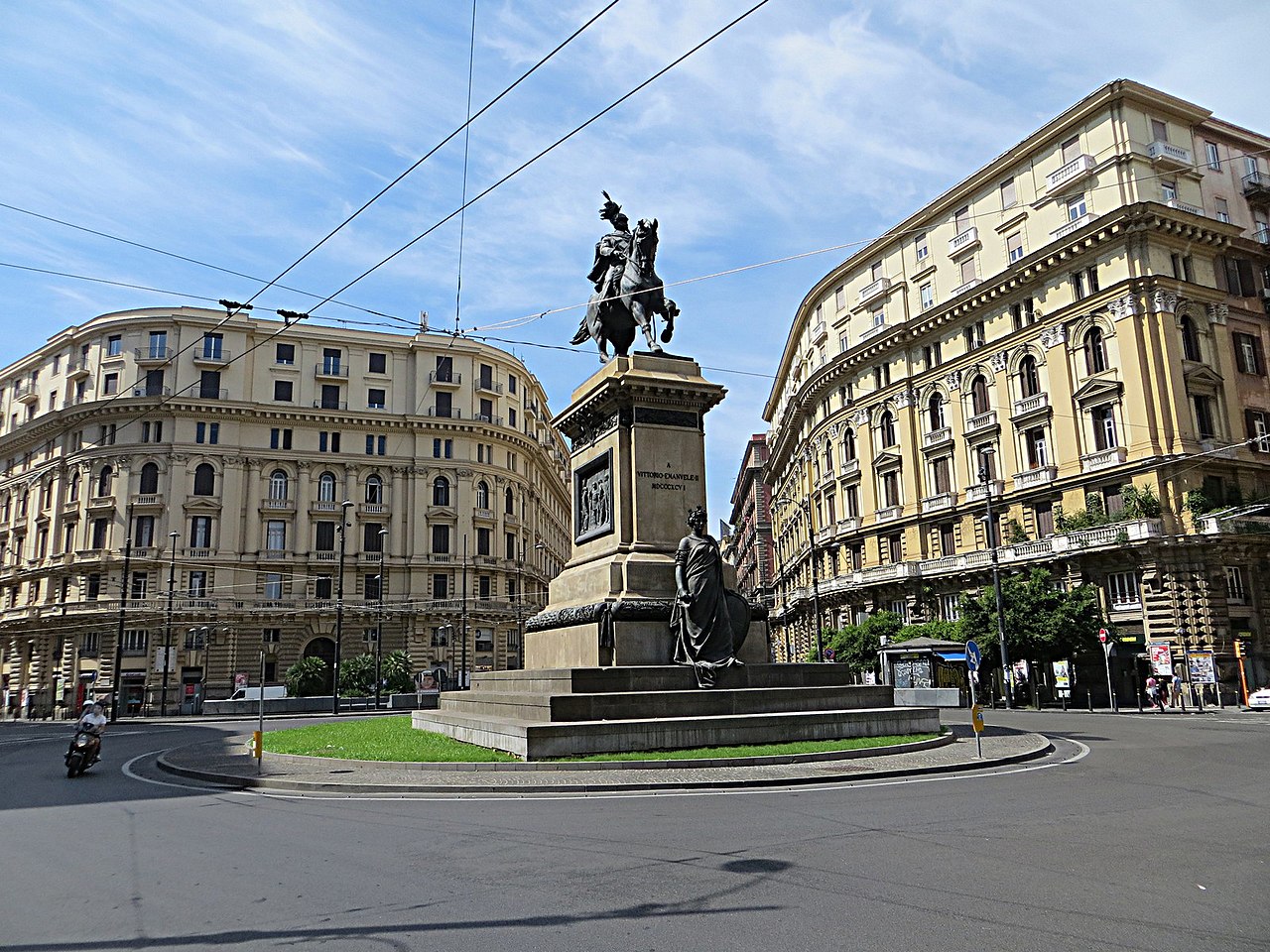
The twentieth century opened with the 1900 National Hygiene Exhibition which was held in Naples, in the Villa Comunale. Seven temporary pavilions were built. Some were later transformed into the Naples Tennis Club, which is located in what is now Viale Dohrn. The exhibition was inaugurated in May by King Umberto I and Queen Margherita. It was innovative because, for the first time, the emphasis was on personal hygiene and on the hygiene of the territory as a prophylaxis against the development of epidemic diseases. On 29 July 1900 King Umberto I was assassinated by an anarchist. This tragic event put an early end to the Neapolitan exhibition.
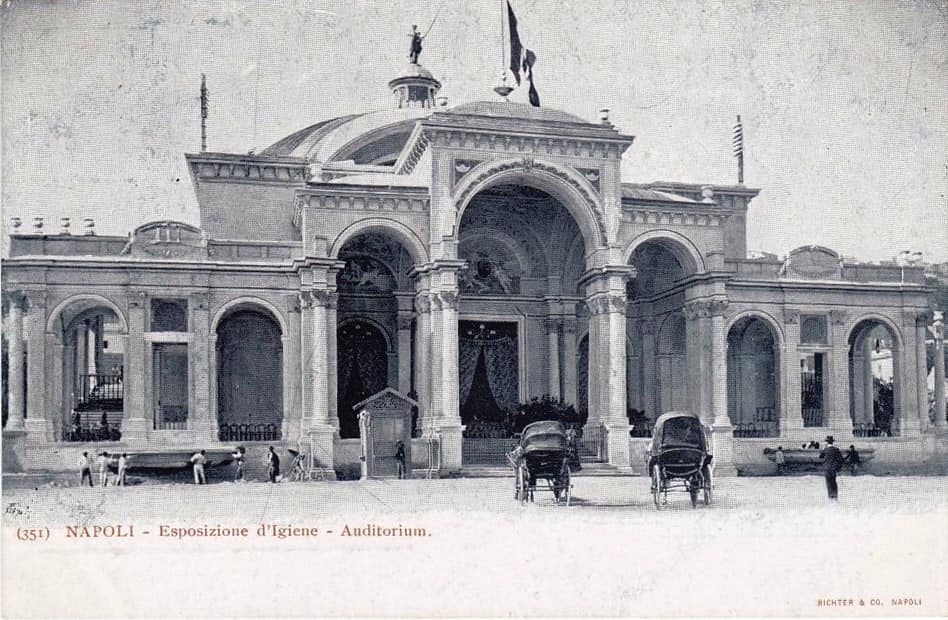
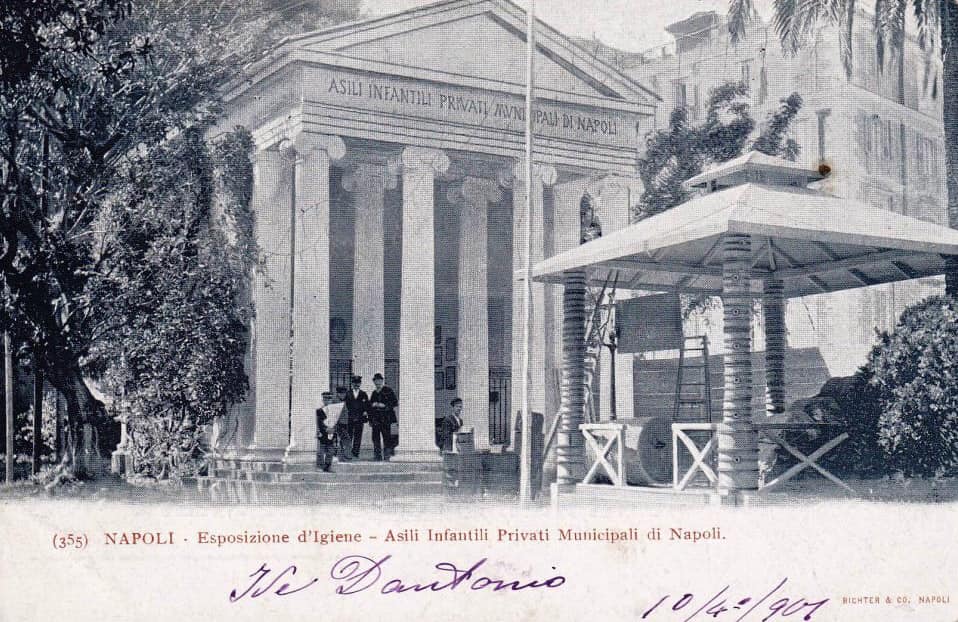
At the beginning of the century, the port of Naples had become the maritime station of connection between Italy and the African colonies and a gateway for southern migrants looking for a new life in North and South America: United States, Venezuela, Brazil and Argentina. Emigration, which until 1900 had mainly affected the northern regions of Veneto, Friuli and Piedmont, with departures from the port of Genoa, from the early years of the new century mostly involved the populations of the south. Between 1900 and 1920, three million southerners, not having the possibility of escaping their desperate economic and social situation, embarked on the ships that led to America.


The outbreak of the great war did not directly involve Napoli due to the distance from the front. However, many Neapolitans were drafted and sent north to fight. The Neapolitan industries gave their contribution to the war effort by dedicating themselves to the construction of weapons and bullets. On 9 November 1917, given the catastrophic progress of the clashes in Friuli and Veneto, with the defeat of Caporetto and the risk of an invasion of the Po valley by the Austrians, King Vittorio Emanuele III replaced the commander of the armed forces Luigi Cadorna who had not hesitated to throw the blame for the defeat on the alleged cowardice of his soldiers to hide his own responsibilities. The Neapolitan general Armando Diaz was appointed commander in chief and led the Italian army to victory.
During the First World War Naples was the subject of one of the first aerial bombings in history. On the night of March 10, 1918, the Austrian Zeppelin LZ104 airship, which took off from the Bulgarian base of Jambol, carried out three bombings on the city. There were 16 dead and 64 injured. Only after the war did it become clear that the explosions of March 10 were caused by bombs dropped from an airship. Those responsible for the anti-aircraft defense of the city, completely passive during the bombing, were tried and sentenced.
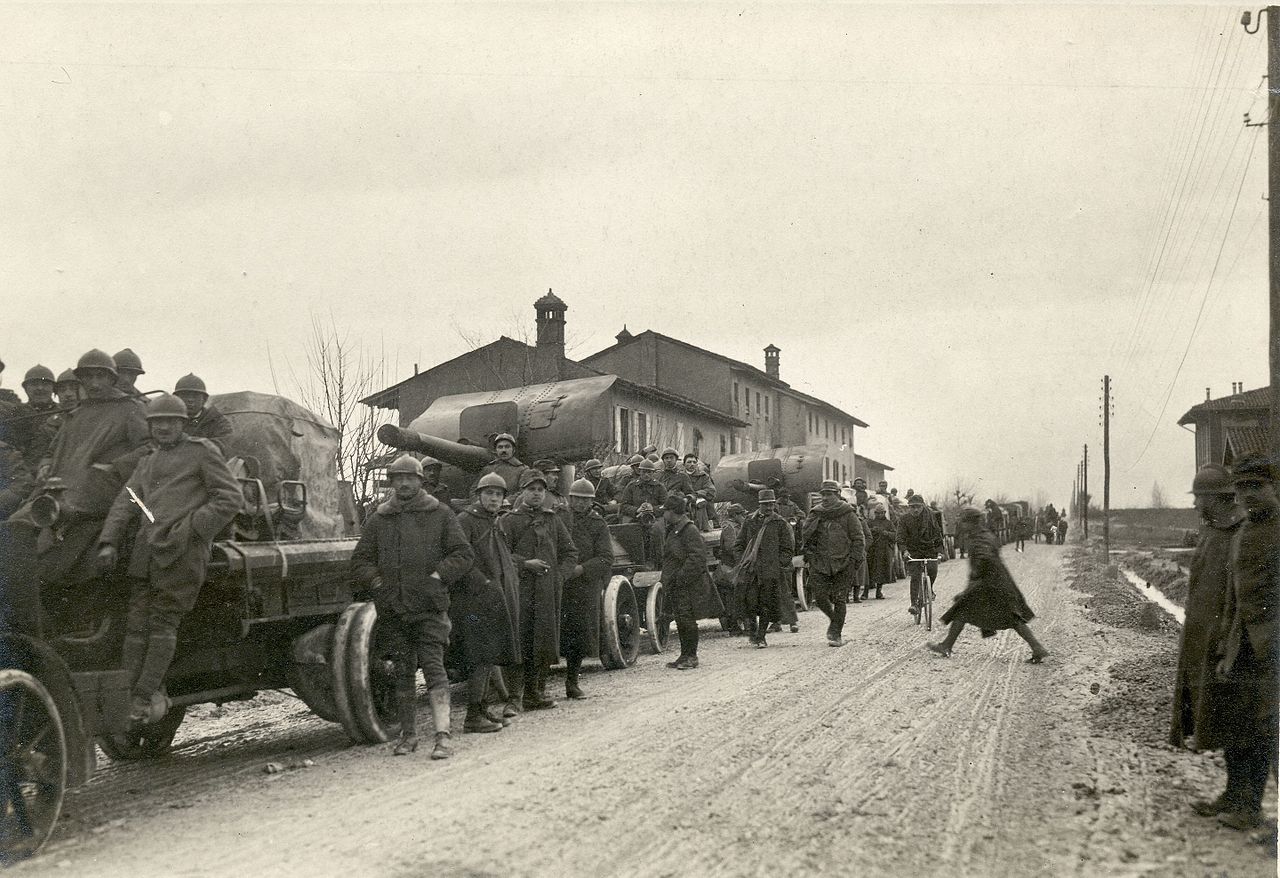
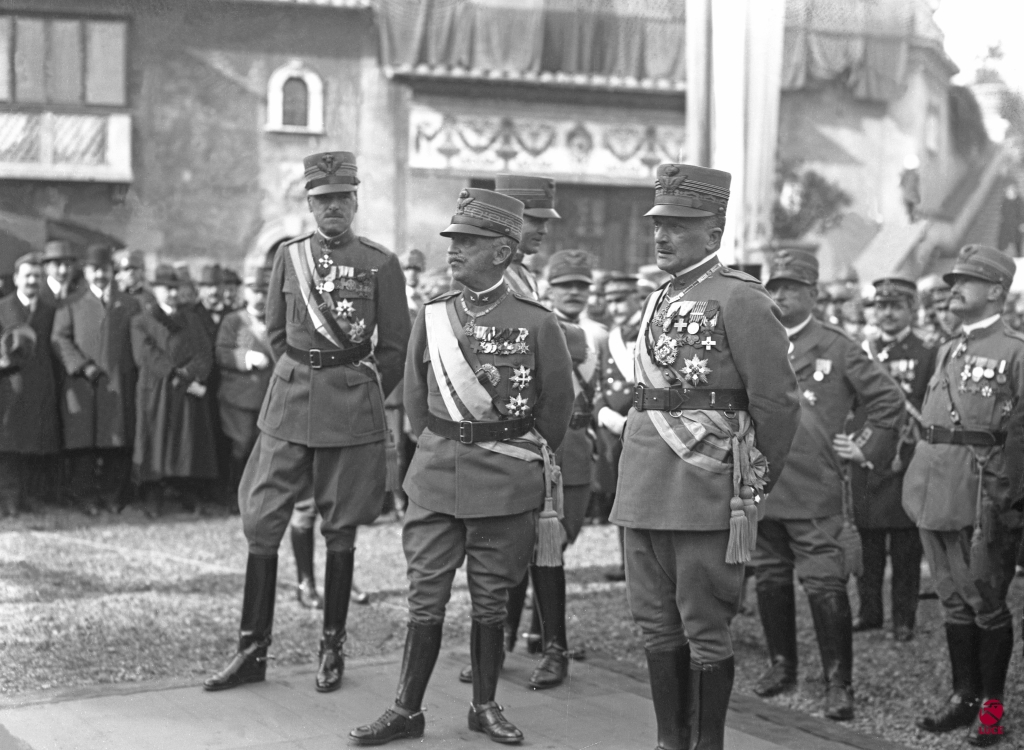
After the war there were the first manifestations of the followers of fascism, which had one of its most important bases in Naples. On 24 October 1922, during a fascist demonstration, in preparation for the march on Rome, a participant in the procession was hit in via Foria by a bouquet of flowers that hid a stone. As a reaction, one of the fascists took up a pistol and fired indiscriminately. An elderly lady, who was looking out of a window, was hit by a stray bullet and died. On 28 October, thousands of fascists left Naples and headed for Rome. It was that March on Rome that led to the birth of the government led by Mussolini.
A prominent figure of the Fascist movement was the Neapolitan (born in Portici) Aurelio Padovani who in the city had a following perhaps even greater than Mussolini himself. Aurelio Padovani was the first dissident in his party and was soon ousted from the levers of power for his ideas linked to revolutionary syndicalism. He died in 1926 in suspicious circumstances due to the collapse of a balustrade of a balcony in via Generale Orsini where he had looked out to greet the crowd cheering him. Eight other party members also died with him.
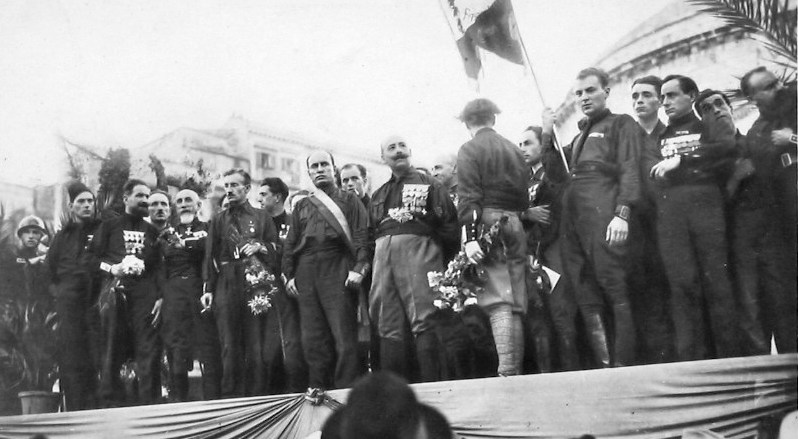
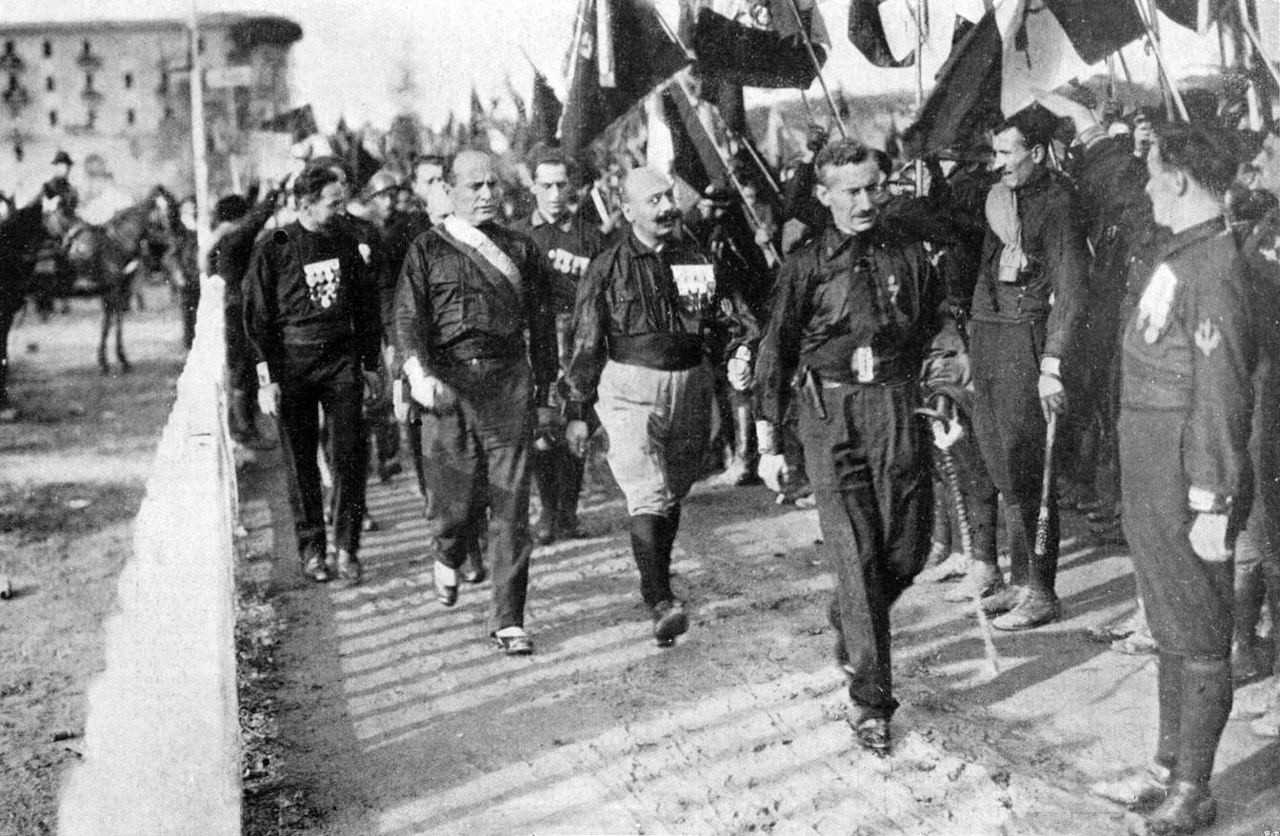
During the fascist period Naples was the starting point of the imperialist expansion on the other side of the Mediterranean, in Libya and in North Africa. In this regard, in 1936 a great importance was given to the port with the creation of the new maritime station. WW2 threw Naples in the midst of the war and as was the case with many European cities, the city paid a high price in infrastructure damage and human lives. Germans and Allies, turned many European cities like London, Paris, Rome, Berlin, Dresden into their battlefield. Naples endured a very high number of aerial bombings. Many families, following the advice of the authorities, had moved to the surrounding villages and countryside before the bombing of the city began. Other families followed the first only after the bombings had begun. Many Neapolitans who did not have that chance sought refuge in the natural ravines and in the city tunnels. The first to make air raids were the British starting in November of 1940. The Americans continued with the so-called carpet bombing, which made no difference between military targets, residential buildings and unfortunately also hospitals. Bombings that took place in broad daylight while the population was intent on their daily activities. There were thousands of civilian deaths. Industries, warehouses, railway station, port and buildings were hit and destroyed.

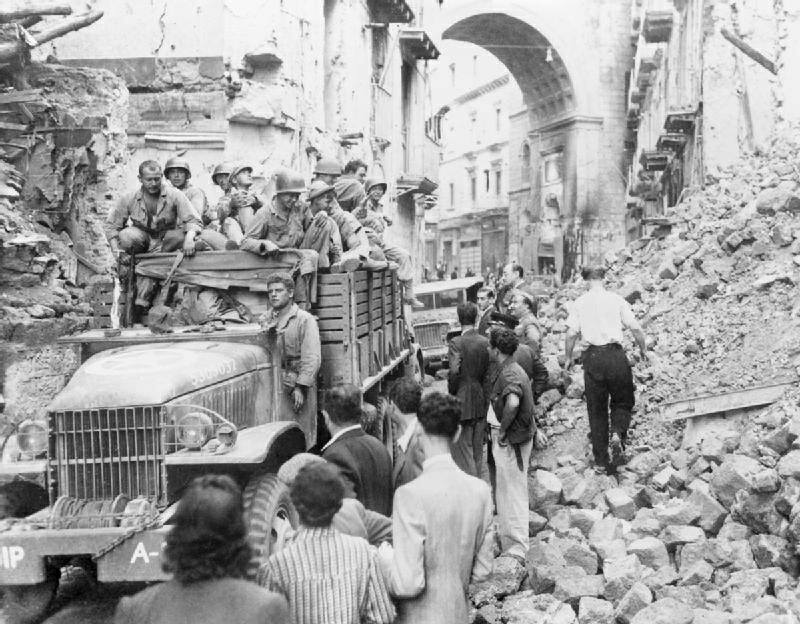
The popular uprising between 27 and 30 September 1943, remembered as The Four Days of Naples, with the expulsion of the Germans from the city and the arrival of the allies on 1 October, did not mark the end of the war in Naples. The bombing continued for a few months by the German air force. Naples had become the allied rear of the Cassino front. Meanwhile, Benedetto Croce, in Villa Tritone in Sorrento, where he lived during the war period, met the Italian political figures and the representatives of the allied forces as president of the Liberal Party and on the strength of his international reputation. The meetings were aimed at forming a government of national unity that could lead the country. On 18 June 1944, as a result of the talks, the Bonomi government was born, in which Croce was a minister. With the birth of the republic Croce was offered the position of the head of state, but refused to devote himself to his studies. Naples became the place where the allied military came on leave from the front to rest. A thriving illegal trade in everything the population needed developed in the city. Numerous smugglers shuttled between the surrounding countryside, where they procured food and consumer goods, and traded them in the city where they sold at a much higher price. Naples was invaded by numerous sciuscià, children and young people who offered to polish the shoes of the American military. Many shoe shiners sold their bodies in exchange for the few dollars necessary for their own survival and that of their families. Up to the mid 1950’s poverty was the norm.

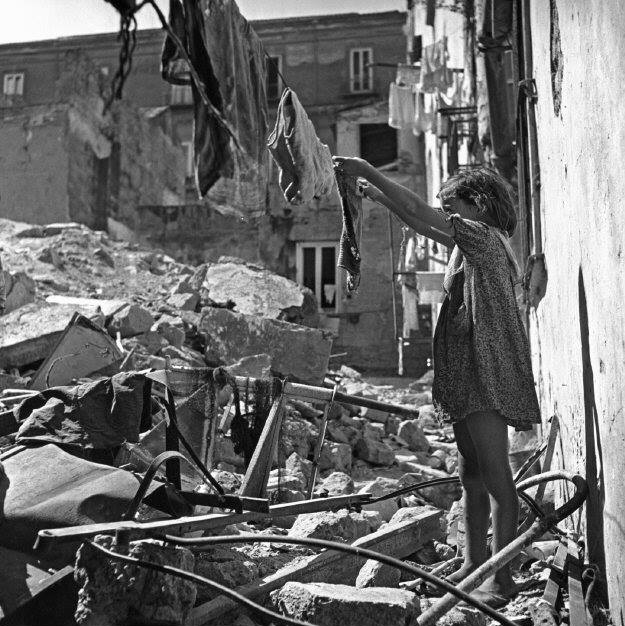
With the economic boom experienced in Italy in the 1960s, Naples saw the birth and development of numerous industries and economic activities. In 1910 the ILVA steel plant had been established in Bagnoli. Immediately after the war, the Cementir plant was created next to ILVA, for the production of cement. The Castellammare di Stabia, a few kilometers from the city, the 18th century shipyard that had built in one of the most beautiful training ships the Amerigo Vespucci for the Italian Navy in 1931, was incorporated into the publicly owned company Italcantieri. The shipyard oversaw the construction of numerous ferries. In 1953 Adriano Olivetti commissioned the architect Luigi Cosenza to build a factory in Pozzuoli to be used for the construction of calculating machines. That factory with a splendid view over the Gulf of Pozzuoli became a success story that offered its workers salaries above the national average until the arrival of cheap electronics from the east in the 90’s. Alfa Romeo and Renault built their factories in the wider area which saw an increase of population that by the 1970’s had reached 1,25 million residents. After 1971 the trend started to change, the city went into an deindustrialization cycle, the number of businesses decreased and unemployment increased significantly. The labor unions started to push for more works and higher salaries but the trend would only intensify. Wildcat construction of cheap 5-7 storey buildings, built without authorisation from the city, in an area that the zoning plan had classified as agricultural would give rise to modern day slums (Scampia e.g.).
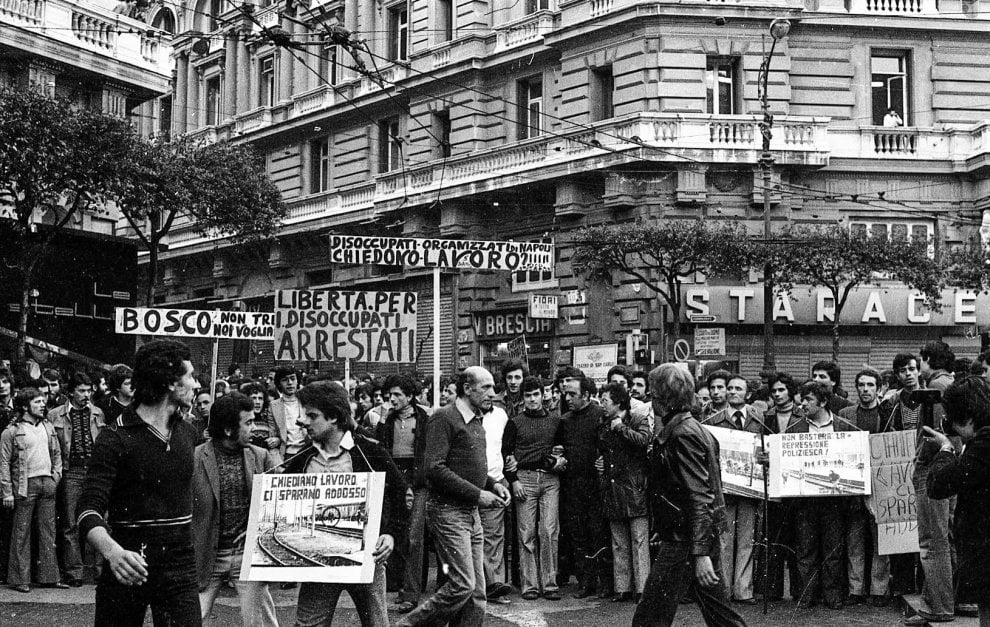
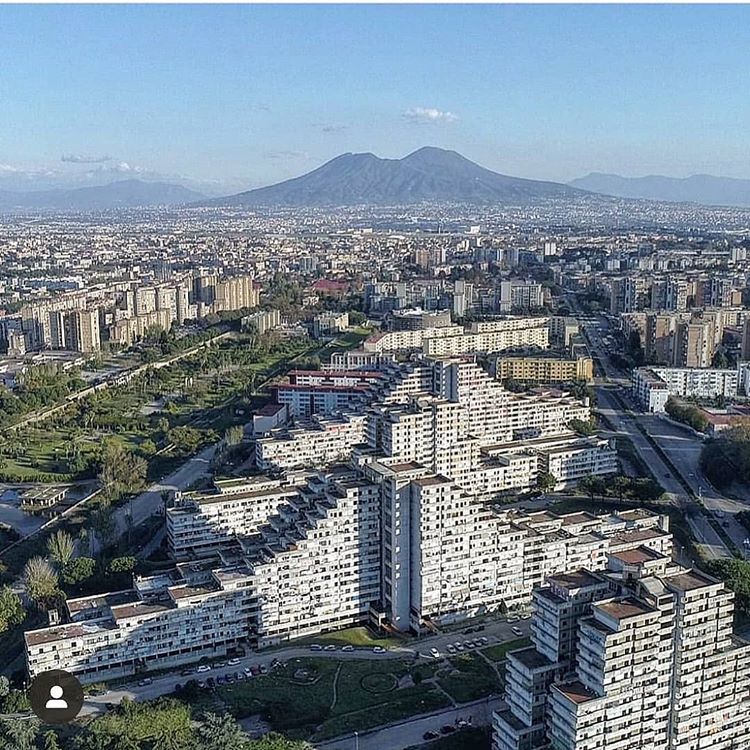
A powerful earthquake of of 6.9 degrees on the Richter scale, would cause the death of almost 3,000 in the region of Campania and leave tens of thousands without a proper home in the city. While the momentum of economic growth continued after the earthquake with the construction of the new headquarters of the city of Naples in the 1980’s and the inauguration of the first Metro section in the 90’s, the city would grapple with a waste management crisis that would last for more than twenty years until it was finally resolved in 2009, with the Acerra incineration facility. The city would also struggle with the Camorra that had managed to infiltrate into large sections of the economy, like that of constructions that were especially lucrative after the large earthquake of 1980. In a major police blitz of June 17, 1983 (defined by the press as “the black Friday of the Camorra”) more than 856 arrest warrants against members of the Camorra mostly centered in Naples, were carried out throughout Italy. A year later Diego Maradona is transferred from F.C Barcelona to F.C. Napoli the most successful soccer team of the city since the 1960’s. By helping Napoli win the championship of Serie A in the 1986–87 season, the first team from Southern Italy to do so in Italian history, Maradona became a modern godlike figure for all Napolitani to this day.
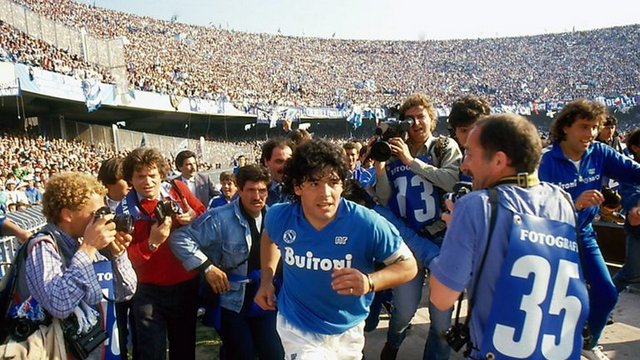
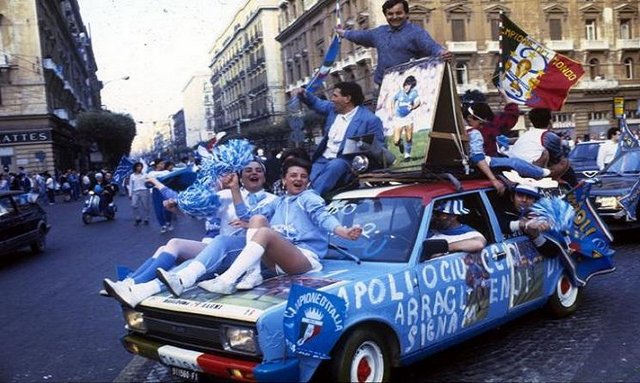
In 2011 Luigi de Magistris, a highly respected prosecutor was elected Mayor of Naples as the candidate of his municipal party “Italy of Values”. The people of Naples had had enough of their share of mismanagement and corruption. Not only has De Magistris attempted to tackle corruption within Naples’s administration, but he has also taken measures to address more conventional social issues, from resisting efforts to privatize public space to introducing environmental measures — even giving official recognition of occupied spaces and setting out plans for a €600 monthly minimum income for the unemployed. The city’s infrastructure received a bust with the high speed railway that connected Rome with Naples,that reduced the distance from the capital to 1 hour. In the same time the Metro network added a new line reaching 26 stations by 2021 and a plan to expand even further by 2024.
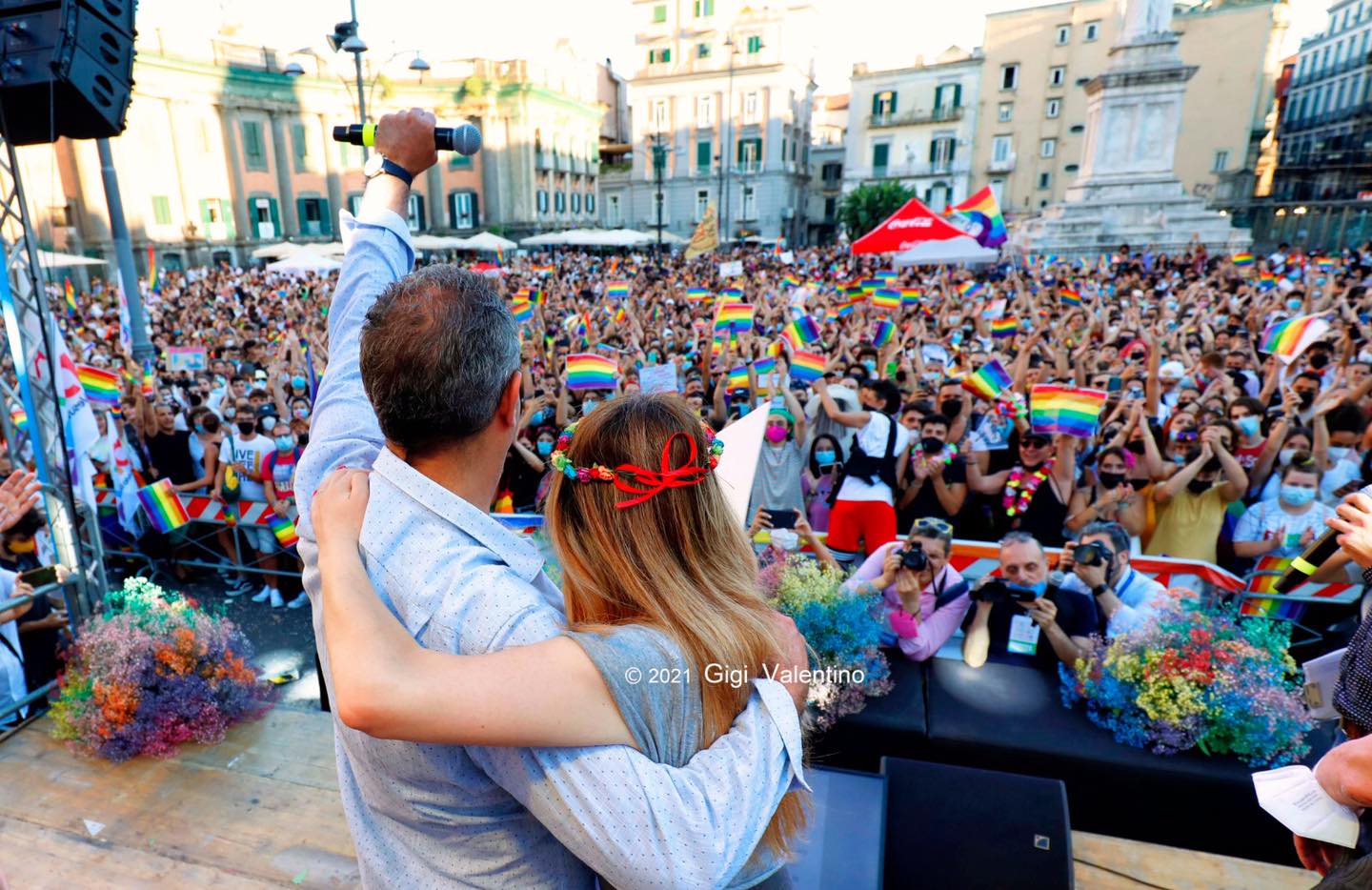
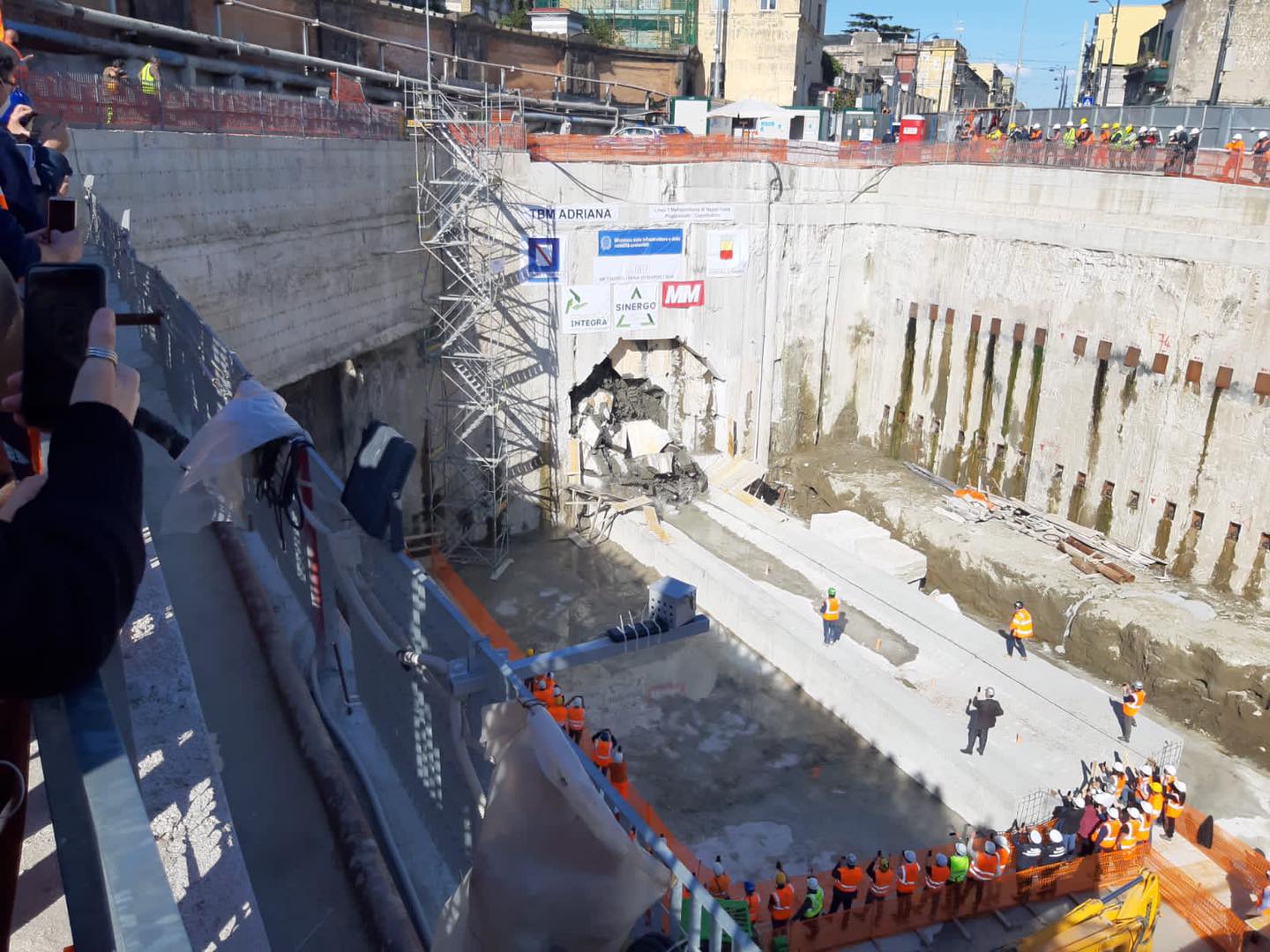
Today the capital of Campania is the third largest city and urban economy in Italy after Rome and Milan. The Port of Naples is one of the most important in Europe and home of the Allied Joint Force Command Naples, the NATO body that oversees North Africa, the Sahel and Middle East. Naples’ historic city centre is the largest in Europe and a UNESCO World Heritage Site, with a wide range of culturally and historically significant sites nearby, including the Palace of Caserta and the Roman ruins of Pompeii and Herculaneum. Ιts natural beauties such as Posillipo, Phlegraean Fields, Nisida, and Vesuvius are world famous, something that adds up to the picturesque islands of the gulf Capri, Ischia and Procida that have become a magnet for tourists that flock to get a taste of South Italian serenity all year long . Neapolitan cuisine is noted for its association with pizza, which originated in the city, as well as numerous other local dishes. Naples has the most stars from the Michelin Guide of any Italian city.

